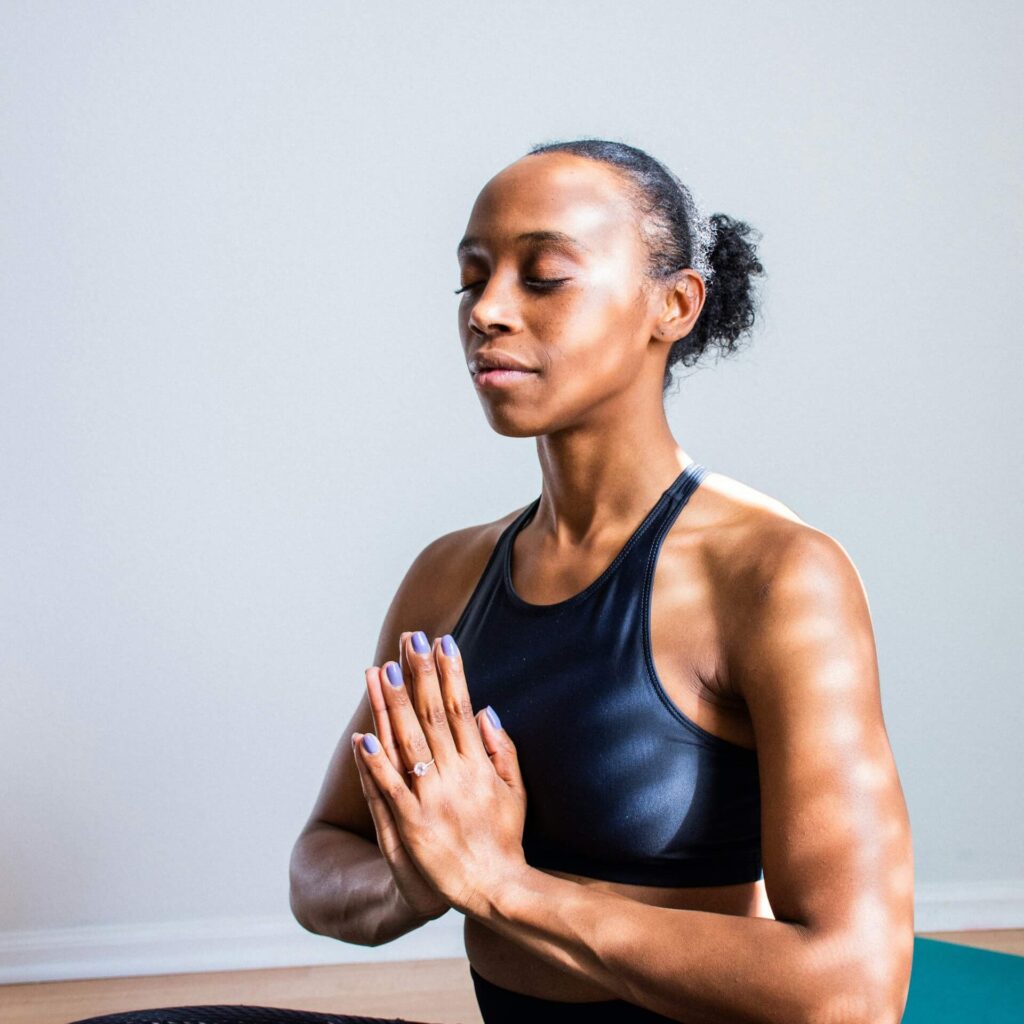Imagine feeling dizzy, lightheaded, or nearly fainting every time you stand up. This is the case for some people with POTS, a mysterious condition that’s on the rise.
POTS causes a wide range of symptoms like severe fatigue, heart palpitations, brain fog, and much more. Post-COVID, we’ve seen a huge uptick in POTS cases at our clinic.
Before the pandemic, POTS was estimated to affect between 1 to 3 million people. But since COVID-19 entered the scene, some experts predict that’s doubled.
So what can you do if you suspect you or someone you love has POTS? Keep reading to get the nitty gritty on POTS and how functional medicine approaches treatment.
What is POTS?
POTS is short for postural orthostatic tachycardia syndrome. I know that’s quite a mouthful! So let’s break down what those words mean.
- Postural: relates to your body position
- Orthostatic: an upright posture
- Tachycardia: a heart rate that’s faster than normal
- Syndrome: a set of symptoms that occur together
Weaving it together, POTS is a condition that causes the heart rate to rise rapidly when going from lying down or sitting to standing. This can lead to a slew of symptoms.
POTS is a form of dysautonomia–a disorder affecting the autonomic nervous system (ANS). Your ANS is in charge of functions outside your conscious control, like your heart rate, blood pressure, and body temperature.
Normally blood flow stays steady whether sitting, standing, or lying down. But for some people, that rate changes significantly when changing positions. This is known as orthostatic intolerance–and it’s the hallmark sign of POTS.
POTS can cause blood to pool in the lower limbs. This makes it harder to get enough blood to your brain, which can lead to dizziness, fatigue, and other symptoms.
Symptoms of POTS

POTS symptoms vary from person to person, but may include:
- Dizziness, lightheadedness, or fainting (especially when going from horizontal positions to standing)
- Extreme fatigue
- Heart palpitations
- Chest pain
- Shortness of breath
- Brain fog
- Exercise intolerance
- Shakiness or excessive sweating
- Headaches
- Anxiety or nervousness
- GI symptoms like nausea, heartburn, constipation, and abdominal pain
For some, symptoms may appear suddenly. For others, they may come on gradually. Symptoms tend to be worse in the morning and may ramp up in certain situations.
POTS symptoms often get worse:
- In warm environments like taking a hot shower or being outside on a hot day
- When standing for long periods, such as waiting in line at the grocery store
- When transitioning too quickly from lying down to standing
As you can imagine, these symptoms can make it difficult to function in your day-to-day life.
What Causes POTS?
Researchers aren’t entirely sure. But scientists have noticed patterns in POTS symptoms and grouped them into three subtypes.
The main types of POTS are:
- Neuropathic POTS is caused by impaired nerve function in the hands and feet. This can cause blood to pool in the legs.
- Hypovolemic POTS is due to reduced blood volume. Meaning, there’s not enough fluid circulating in your body.
- Hyperadrenergic POTS is when the sympathetic nervous system (your ‘fight or flight’ response) is overly active. This leads to high levels of norepinephrine.
It’s also possible to have all three forms of POTS at once.
Evidence suggests autoimmunity could play a role in POTS too. This is because many people with POTS have higher levels of autoantibodies–a marker of autoimmune disease.
Secondary POTS is also a possibility. This is when POTS symptoms are linked to another health condition like Lyme disease. More on this later…
How is POTS Diagnosed?
POTS diagnosis can be tricky since its symptoms run the gamut. The most common tests for POTS are a tilt table test or a 10-minute stand test.
For a tilt table test, you lie down flat, secured to a table. The table then tilts you into an upright position. During the test, your heart rate and blood pressure are measured. If your heart rate rises more than 30 beats per minute when upright, that’s a sign of POTS.
A 10-minute stand test is just what it sounds like. You lie down flat for 10 minutes and then stand up. Your heart rate and blood pressure are monitored to see how your body handles the transition.
POTS shares symptoms with many other health conditions. So other tests may be ordered to rule other conditions out.
Can Functional Medicine Help With POTS?
Yes! As mentioned, POTS is a secondary condition for many. Meaning, symptoms emerge due to another underlying health issue.
Functional medicine doctors are experts at finding the root cause behind mysterious symptoms. And when it comes to POTS, the list of related conditions is long.
Here are some root causes that may potentially trigger POTS:
- Adrenal fatigue
- Thyroid dysfunction
- Lyme disease
- Viral infections such as the Epstein-Barr virus
- Post COVID-19
- Parasitic infections
- Mast cell activation syndrome (MAST)
- Ehlers Danlos syndrome and/or hypermobility
- Diabetes
- Heavy metal toxicity
- Myalgic encephalomyelitis, also called chronic fatigue syndrome or ME/CFS
- Mold toxicity
- Migraine
- Autoimmune disorders
- Food sensitivities
- Nutrient deficiencies like vitamin B12, vitamin D, and iron
Once underlying causes are identified, treatment is targeted to address them. This may include dietary changes, exercise and lifestyle recommendations, or nutritional supplements.
Holistic Ways to Manage POTS
Finding the root cause triggering POTS is important for long-term recovery. But there are also simple things you can start doing now to help ease POTS symptoms:
Bump up hydration
Drinking more water is one of the easiest ways to manage POTS. POTS reduces blood volume. So your body needs more water to offset this.

Aim to drink at least 2-3 liters of water each day. If you’re exercising, or it’s hot out, you’ll need more. Adding sea salt or electrolytes to your water can also help improve your blood volume.

Eat a POTS-friendly diet
What you eat–and how much you eat–can also affect POTS symptoms. Here are some guidelines to keep in mind.
- Keep blood sugar steady. Sugary foods and carb-heavy meals can cause drastic blood glucose spikes and worsen POTS symptoms. To keep your blood sugar stable, steer clear of simple carbs and opt for fiber-rich complex carbs like sweet potato, quinoa, or lentils. Pairing carbs with protein or fat can also help blunt blood sugar spikes.
- Eat smaller meals. When you eat large meals, a lot of your body’s blood is directed toward digestion. This diverts blood away from your heart and brain and can worsen symptoms. Eating smaller, more frequent meals can help prevent this.
- Eat more salt. Salt increases blood volume and supports the adrenals–both crucial for POTS. Many experts say to get between 6,000-10,000 mg of salt per day. Try adding mineral-rich sea salt to your water. Or eat more salty foods like olives, pickles, salted nuts, broth, or canned sardines.
Wear compression garments
Research shows wearing compression garments may benefit some people with POTS. Compression stockings prevent blood from pooling in your lower limbs, which may ease symptoms.
Raise the head of your bed
POTS symptoms are often worse in the morning upon waking up. Raising the head of your bed 6 to 10 inches increases your blood volume in circulation. This can make it easier to stand up in the mornings.
For this to work, the entire bed must be tilted. Using bed risers is an easy way to do this.
Build exercise tolerance slowly

Exercise intolerance is one of the textbook signs of POTS. This can make people with POTS avoid exercise–which only makes matters worse!
Exercise is crucial for healing POTS. But it’s important to choose the right exercise and work your way up slowly. Isometric exercises like planks and glute bridges are good places to start because they don’t require standing. (Here’s a gentle POTS workout that stays low to the ground)
Horizontal exercises like swimming, rowing, and recumbent biking can also help you ease into exercise. Gentle yoga and short pilates sessions are other good options. As you get stronger, you can increase the intensity and length of workouts.
Avoid triggers
Certain things can trigger POTS symptoms. Common triggers include heat, alcohol, standing for long periods, or standing too quickly. Being mindful of triggers may reduce POTS flare-ups.
Here are some ways to keep triggers at bay:
- Use A/C, misters, or fans to stay cool and dress in layers
- Ditch hot baths and showers for lukewarm water
- Swap alcoholic drinks for mocktails
- Avoid prolonged standing
- Flex your glutes, calves, and feet when standing, and shift your weight from one foot to another
- Give yourself time to transition slowly when standing, especially in the morning
Reduce stress

At its heart, POTS is a nervous system disorder. That’s why stress management is a must for keeping POTS in check. Relaxation practices like yoga, meditation, and deep breathing are easy ways to melt away stress and balance your nervous system.
Vagus nerve exercises can also trigger your body’s relaxation response, which may ease symptoms. Or consider a brain retraining program to shift out of stress mode into a calmer state of mind.
Try supplements
Some supplements may also help ease symptoms. Here are a few supplements for POTS to consider:
- Magnesium helps slow the heart rate and calms the nervous system.
- Potassium promotes nerve function, fluid balance, and muscle contractions. At Anchored in Health, we use reacted magnesium and potassium, which is better absorbed.
- CoQ10 supports cardiovascular health and helps the mitochondria produce energy.
- Adaptogens like licorice root, rhodiola, or ashwagandha may help balance the body’s stress response–which is crucial for POTS.
- Adrenal support is often helpful, as we see a huge correlation between adrenal fatigue and POTS in our clinic.
Keep in mind, people with POTS are often sensitive to supplements. So it’s best to check with your doctor before starting new supplements.
Find the Root Cause of POTS with Functional Medicine at Anchored in Health in Orland Park, IL
If you live in the Chicago area and are tired of POTS symptoms stealing your quality of life, Anchored in Health is here for you.
Our functional medicine doctor can help you get to the root of what’s triggering your POTS symptoms. From there, you’ll get a personalized treatment plan to help you find relief.
So if you’re ready to get answers and take back your life from POTS, follow these steps:
- Contact us with questions.
- Schedule your first appointment with our functional medicine doctor here.
- Uncover your triggers and learn how to manage POTS symptoms so you can live a healthier, happier, life!
Other Health and Wellness Services Offered at Anchored in Health in Orland Park, IL
At Anchored in Health, we offer a wide range of services to support your health and well-being in addition to functional medicine. This includes chiropractic care, acupuncture, massage therapy, and the Shape ReClaimed program. We also provide thermography and genetic testing to give you valuable insights into your health.
Contact us to find out how we can support you on your path to wellness. And feel free to visit our blog for more helpful tips!
Disclaimer: The information provided on this blog is for educational and informational purposes only and is not intended to diagnose, treat, cure, or prevent any disease. The content is not a substitute for professional medical advice, diagnosis, or treatment. Always seek the guidance of a qualified healthcare provider with any questions you may have regarding your health or a medical condition.
Reading this blog does not establish a doctor-patient relationship between you and Anchored In Health or any of its practitioners. Reliance on any information provided in this blog is solely at your own risk. For medical concerns, always consult a licensed healthcare provider.
Sources
- https://www.dysautonomiainternational.org/page.php?ID=30
- https://my.clevelandclinic.org/health/diseases/16560-postural-orthostatic-tachycardia-syndrome-pots
- https://pubmed.ncbi.nlm.nih.gov/33677650/
- https://pubmed.ncbi.nlm.nih.gov/36055438/
- https://pubmed.ncbi.nlm.nih.gov/31495251/
- https://www.neurology.org/doi/10.1212/WNL.84.14_supplement.P1.280
- https://www.uscjournal.com/articles/narrative-review-postural-orthostatic-tachycardia-syndrome-associated-conditions-and
- https://www.ncbi.nlm.nih.gov/pmc/articles/PMC9296699/
- https://pubmed.ncbi.nlm.nih.gov/33478652/
- https://pubmed.ncbi.nlm.nih.gov/30001836/
